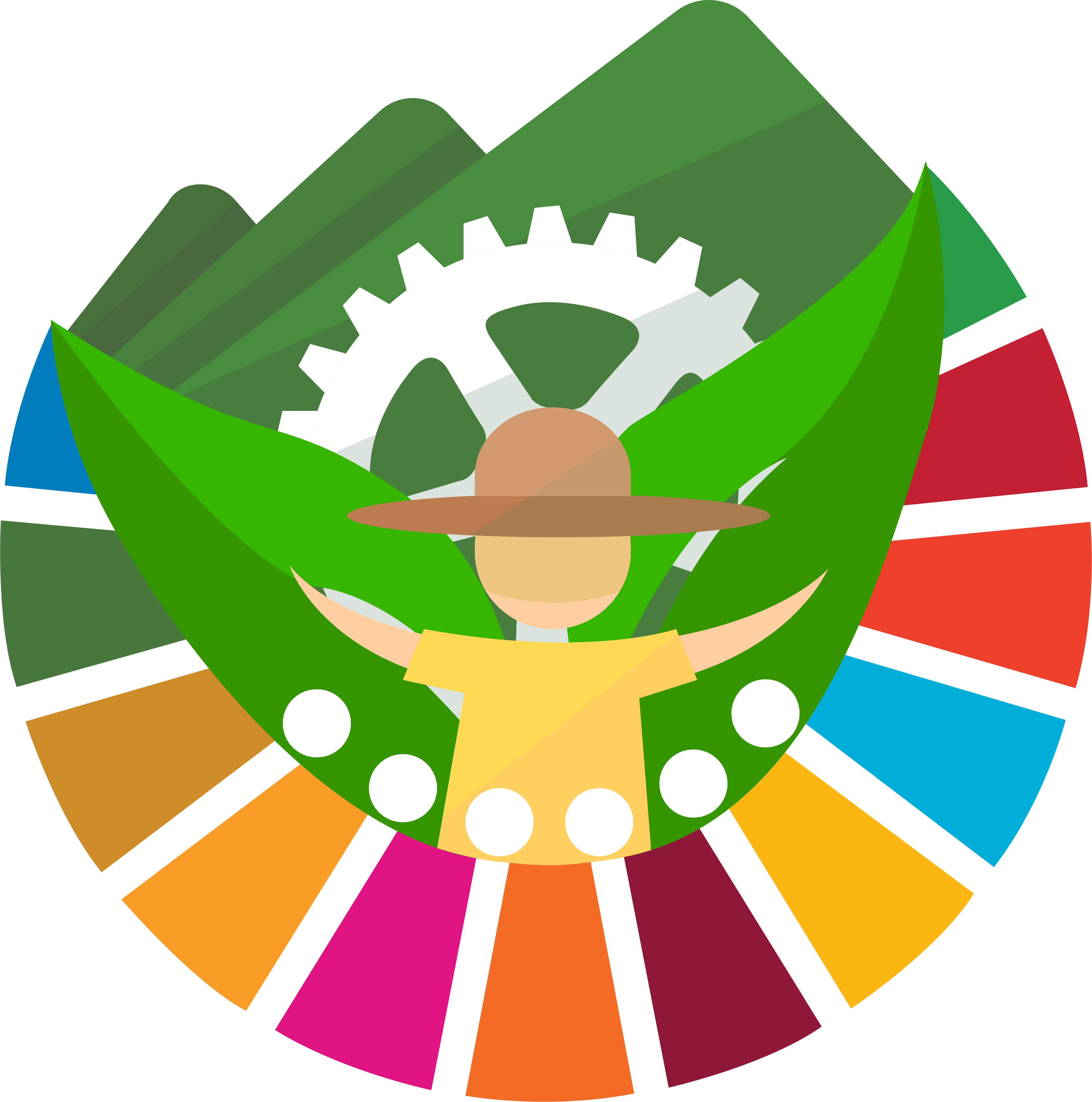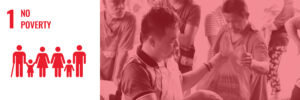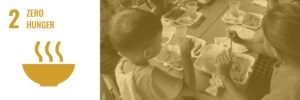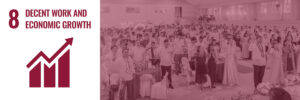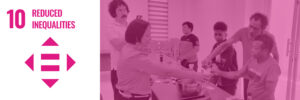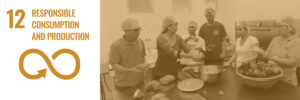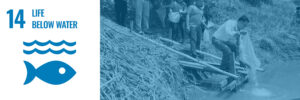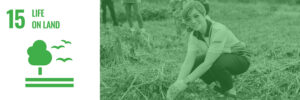2023 – Research | SDG 12 – Responsible Consumption and Production
Technical Research Category
Upscaling of Postharvest Processing and Shelf-Life of Oyster Mushroom: Processing of Mushroom Loaf
Proponents: Melody E. Lim, Arlene L. Remigio, Ma. Leonila G. Cabbacan
Abstract
This study presents the results of a sensory evaluation conducted to assess the attributes of oyster mushroom gyoza, with participation from 50 evaluators. The gyoza were evaluated based on five sensory attributes: appearance, aroma, texture, taste/flavor, and general acceptability, using a 1-9 hedonic scale where 1 indicates “dislike extremely” and 9 indicates “like extremely.” The results demonstrated that the gyoza had a mean appearance score of 7.6, indicating favorable visual appeal. Aroma received a mean score of 7.2, suggesting general appreciation but less impact on the overall experience. The texture was highly rated with a mean of 7.8, showcasing a successful combination of the soft wrapper and tender filling. The taste/flavor emerged as the standout attribute, achieving a mean score of 8.3, reflecting strong satisfaction attributed to the umami-rich filling of the oyster mushrooms. The overall acceptability score of 8.0 confirmed that the gyoza were well-liked by the evaluators. The findings highlight the strong visual appeal, favorable texture, and particularly satisfying flavor of the oyster mushroom gyoza, establishing them as a successful plant-based alternative to traditional meat-filled dumplings.
Upscaling of Postharvest Processing and Shelf-Life of Oyster Mushroom: Processing of Mushroom Steamed Dumpling
Proponents: Norvelyn B. Bautista, Ma. Leonila G. Cabaccan
Abstract
This study presents the results of a sensory evaluation conducted to assess the attributes of oyster mushroom gyoza, with participation from 50 evaluators. The gyoza were evaluated based on five sensory attributes: appearance, aroma, texture, taste/flavor, and general acceptability, using a 1-9 hedonic scale where 1 indicates “dislike extremely” and 9 indicates “like extremely.” The results demonstrated that the gyoza had a mean appearance score of 7.6, indicating favorable visual appeal. Aroma received a mean score of 7.2, suggesting general appreciation but less impact on the overall experience. The texture was highly rated with a mean of 7.8, showcasing a successful combination of the soft wrapper and tender filling. The taste/flavor emerged as the standout attribute, achieving a mean score of 8.3, reflecting strong satisfaction attributed to the umami-rich filling of the oyster mushrooms. The overall acceptability score of 8.0 confirmed that the gyoza were well-liked by the evaluators. The findings highlight the strong visual appeal, favorable texture, and particularly satisfying flavor of the oyster mushroom gyoza, establishing them as a successful plant-based alternative to traditional meat-filled dumplings.
Evaluation of Mycelial Growth of Wood Ear Mushroom (Auricularia auricula-judea) on Different Culture Media
Proponent: Joel P. Bautista
Abstract
This study evaluated the mycelial growth of Auricularia auricula-judea (wood ear mushroom) on different culture media: Potato Dextrose Agar (PDA), Cassava Dextrose Agar (CDA), Rice-Wash Dextrose Agar (RWDA), Sweet Potato Dextrose Agar (SPDA), and Corn Starch Dextrose Agar (CSDA). The experiment was laid out in a Completely Randomized Design (CRD) with three replications. Mycelial growth was monitored by measuring the average diameter of mycelial colonies daily over two weeks. Statistical analysis using ANOVA revealed significant differences in mycelial growth among treatments. Results indicated that CDA and RWDA were comparable to PDA, the standard medium, in supporting mycelial growth. These findings suggest the potential for alternative, cost-effective substrates in mushroom cultivation. this study contributes to identifying sustainable media options for commercial mushroom production.
Extension
PROJECT EARTH: ENVIRONMENTAL AWARENESS AMONG YOUTH OF SAN MARIANO, ISABELA
Proponents: Apol Joy D. Cagayan, Grace D. Yanos, Aisie Bete-Liban, Joanne Clementine B. Ibale
The Isabela State University – San Mariano Campus, through its extension unit, conducted an extension project entitled Project EARTH: Environmental Awareness among youth of San Mariano, Isabela. The beneficiaries of the said project were the senior high school students of Daragutan East National High School, Daragutan East, San Mariano, Isabela. The project was a year-round extension program which aim is to recognize the importance of promoting environmental awareness and to engage the youth to various environmental activities to have an eco-friendly and sustainable lives in their community. Climate change, environmental concerns, disaster resilience, and sustainable practices like urban gardening and recycling were highlighted. The conducted project fosters a sense of responsibility and concern among young people while also safeguarding the local biodiversity and natural ecosystem. In response to integrating the Sustainable Development Goals (SDGs), the project adopted five (5) SDGs which are the SDG 4: Quality Education, SDG 12: Responsible Consumption and Production, SDG 13: Climate Action, SDG 15: Life on Land and SDG 17: Partnership for the Goals. The project made sure that its effects would last by raising knowledgeable, responsible young people.
ISU BIDANI-PNEA : A MULTI-FACETED STRATEGY IN EMPOWERING COMMUNITIES THROUGH FORTIFICATION OF PRODUCT DEVELOPMENT,LIVELIHOOD,AND PROPER NUTRITION
Proponents: Martina R.Peñalber, Myleen R. Corpuz, Mila R. Andres, Jhamie Tetz I.Mateo, MarkhipolitoP.Galingana,Rikka Klaire V. Galinggana
The extension project was an offshoot of the research output of the project team about product development and recipes of the College of Education (CEd)with the undergrad and grad thesis students in Bachelor of Technology and Livelihood Education (BTLEd) and Master of Arts in Teaching major in Home Technology (MAEd-HT). These research outputs became the instrument of this extension project. The project team developed and produced the following products from their research outputs: Cassava-based Sagip, Corn-based Sagip, and Rice-based Sagip, fortified with Cacao Pod Husk power(CPHP) research output of the ISU-Cagayan Valley Cacao Development Center. The output contain nutrients that mitigate Malnutrition.
The objectives of this project were: (1) Determine the demographic profile of the adopted Barangay’s of ISU BIDANI-PNEA; (2) Conduct capacity building on product demonstration for adopted Barangay’s ; (3) Conduct capacity building on product’s basic labeling, packaging, and costing (ROI); (4) Utilizing the produced product, Sagip Nutri-Pack, for Recipe development; (5) Establish rolling stores in the adopted Barangay’s of ISU BIDANI and (6) Determine the number of cases of Malnutrition in the adopted Barangay’s.
The project was able to develop (8) IEC Materials (Recipe/Brochures) developed.(1) IEC Materials was Copyrighted (Recipe/Brochures. Developed (3) Products all fortified with Cacao Pod Husk Power: Cassava-Based Sagip, Corn-Based Sagip, and Rice-Based Sagip.(4) Training designs were crafted; (4) Modules were developed). In terms of Capacity building, 20 males and 50 females were trained and capacitated ; 14 males and 8 females malnourished children were identified. In totality, there were (3) Capacity buildings conducted and two (2) MOU’s forged.
To its impact on the economy, a partnership was established between Isabela State University ,UPLB and LGU-Echague with the Barangay Salvacion, as our 1st pilot from the 15th adopted Barangay’s as the way-forward in Echague, Isabela. Innovation and Product Development led to livelihood for the residents; Rolling stores became an excellent source of livelihood and created jobs for the residents. The knowledge and Skills the residents acquired increase their potential to engage in livelihood training. Increasing residents’ knowledge of product creation leads to livelihood creation in the Barangay. Improve knowledge and skills in product packaging and costing. Utilizing the product helped mitigates Malnutrition. The development of products increases the demand for a larger workforce. Hence, more livelihood was created. Additional income from livelihood allows the residents to earn enough to buy food for the family, especially the children. Economic Impacts. With the creation of more livelihood, job opportunities also increase. Hence, the employment rate also increases. Putting up a Rolling Store means more income generation. Hence, revenue likewise grows, aligned with the SDG no.8 Decent work and Economic Growth
WEED BENEFITS – THE UTILIZATION OF GRASSES, SEDGES, AND BROADLEAVES AS SOURCE OF LIVELIHOOD
Proponents: Eloi Theresa A. Romero, Evelyn B. Cristobal, Jackson Ramos
Grasses, sedges, and broadleaves are considered weeds. These are plants whose undesirable features outweigh their desirable characteristics. They are known as pest in the agricultural fields that interfere with crop growth and development through competition and allelopathy. However, since weeds are plants, they have characteristics that can be beneficial to the ecosystem and to man in daily life including as a source of livelihood. One of the potential livelihoods from the use of weeds is through preserving weeds and using it for letter cards, bookmarks, and other handicrafts such as invitation cards bouquet of dried weeds for weddings, birthdays, valentines’ day, and Christmas gift cards.
Youth at Women and Children Protection Center and Lingap Center were the beneficiaries of these projects by teaching them about weed preservation and used it in making valuable products as a source of income. As feedback, the project served as emotional outlet for the youths from Women and Children Protection Center, skills in arts and craftsmanship were discovered and enhanced, learned that weeds can be a source of income, and the skills taught by the project helped each participant become entrepreneurs while staying in the centers and/or leaving the centers to start a new life.
WINGS OF CHANGE: BOOSTING PRODUCTIVITY THROUGH POULTRY PRODUCTION
Proponent: Lilibeth S. Languido
The Isabela State University San Mariano Campus has been well known in terms of Agricultural production from crops to livestock production since 1978. Poultry production is one of the focusses of the institution since the commodity is considered as one of the quickest productions that gives return/ income and requires less capital and labor. In 2021, the campus is one of the lucky recipients of the Poultry Multiplier Farm worth Five Million (5,000,000.00) under the Bayanihan II program of the Department of Agriculture Regional Field Office 02, which aims to alleviate the effect of the Covid-19 pandemic on the affected constituents (Displaced workers) of the community. The University was given the task to produce quality breeders (Rooster and Hen) and chicks, that were dispersed to qualified recipients for upgrading purposes. A repayment scheme was also implemented in which farmers were obliged to repay 20 chicks one year after the receipt of the animals to ensure the continuity of the project. At present a total of eight hundred ninety-six (896) heads have been dispersed in the municipality of San Mariano, with twenty-nine (29) recipients. Eighteen (18) men, and eleven (11) women were empowered through the series of trainings conducted, an increase in population of the Native chicken by the recipient of Brgy. Dibuluan, San Mariano, Isabela at about 180% based on the data was noted and an additional income amounting to 6,968 pesos was reported by various beneficiaries. The project is also aligned with the Sustainable Development Goals addressing SDG nos. 1,2,3, 4,5,8,10,12,15 and 17, in which impacts on the beneficiaries may be measured.
